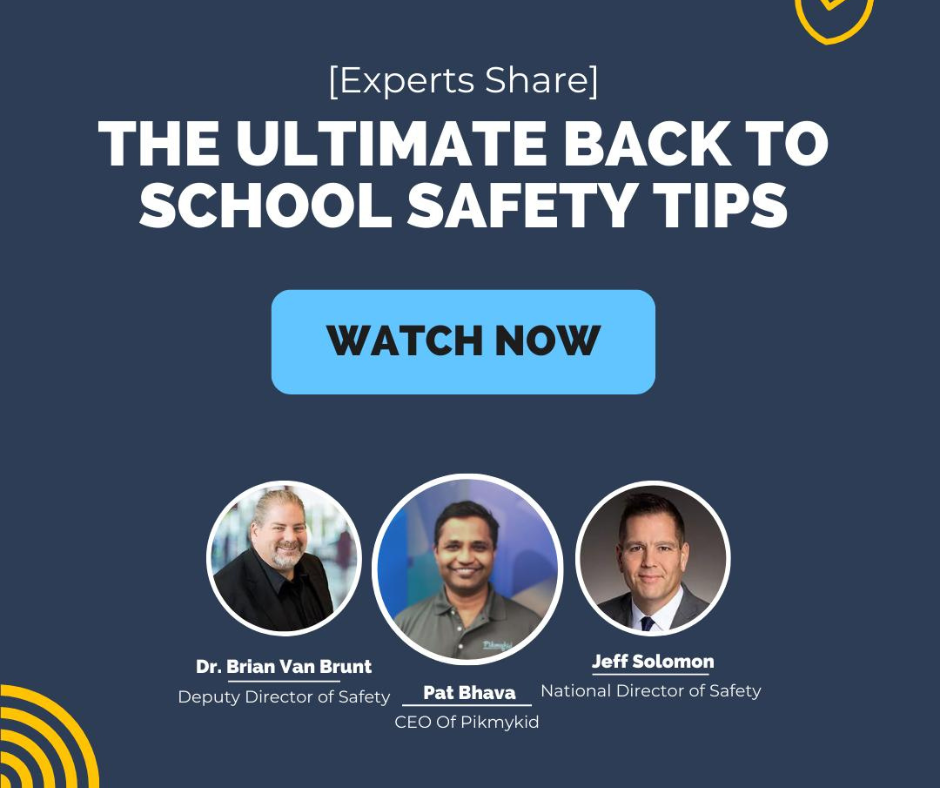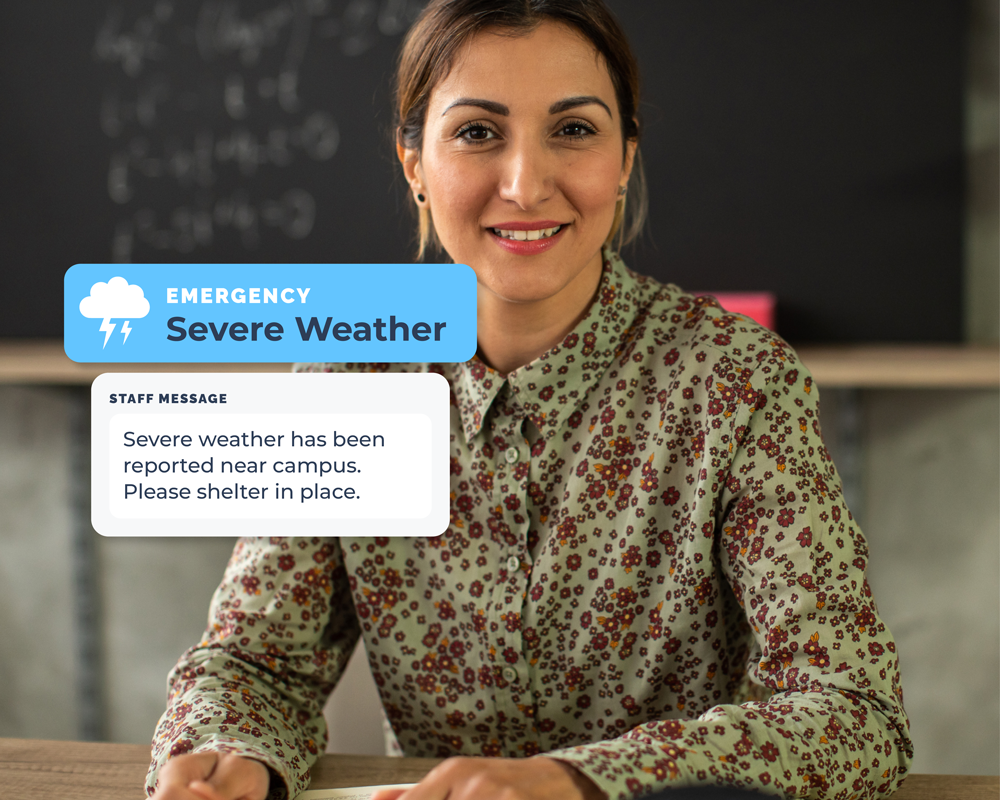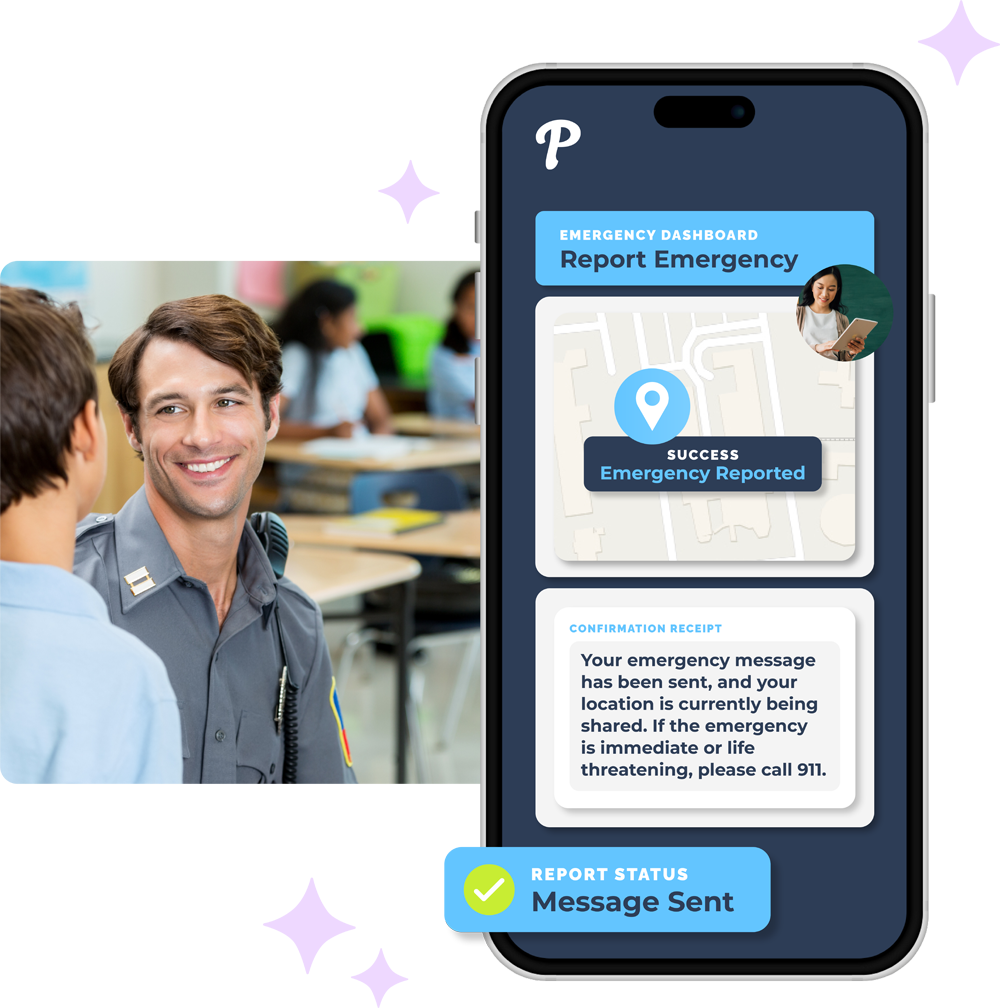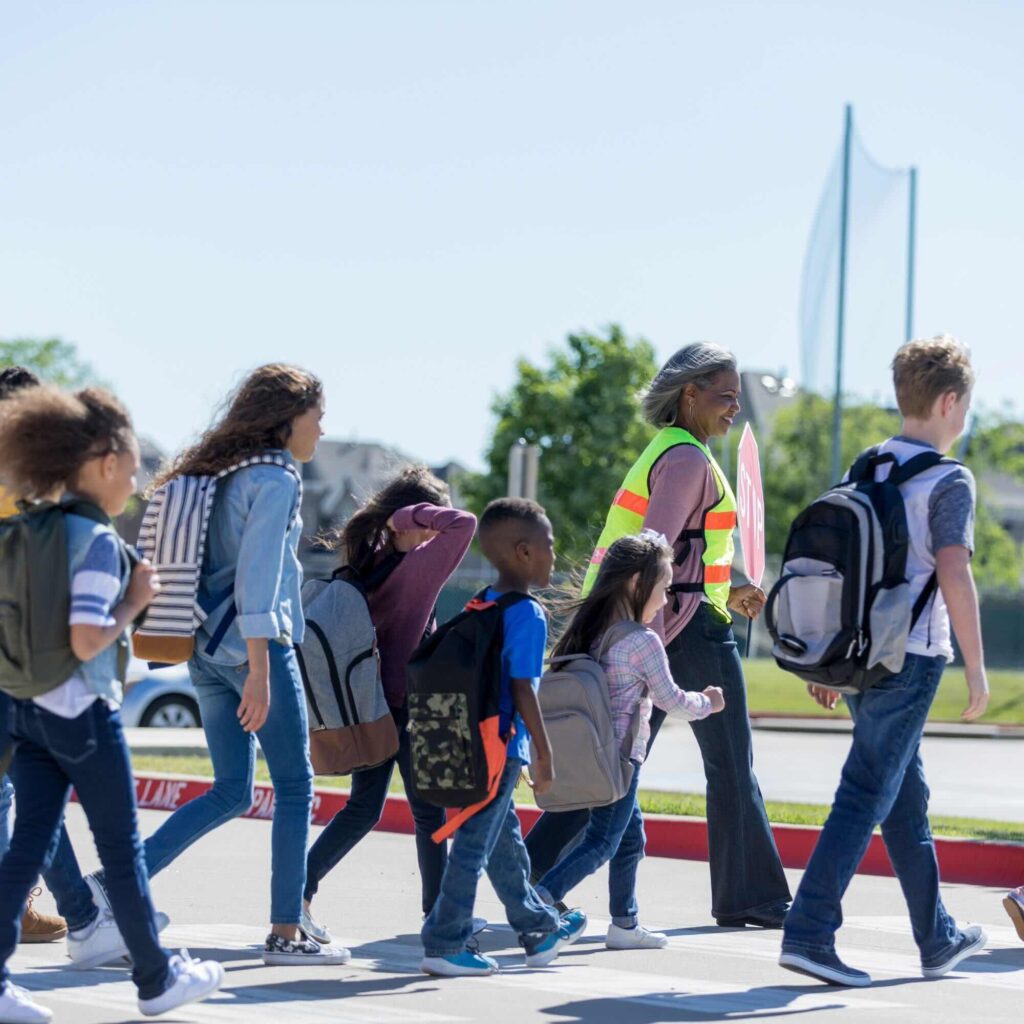In light of the current safety challenges school districts are facing, the Pikmykid team recently hosted a panel of industry experts eager to discuss ways to make school safer, starting today.
You can watch the entire webinar or download our ebook, School Safety Best Practices, in order to access all of their insights. In the meantime, the following is a condensed, yet comprehensive, checklist of school safety best practices and strategies, featuring a few boxes you’ll be able to check off immediately!

The Current Situation Our Schools Are Facing
Although the COVID-19 pandemic is considered by most to have ended, it has left behind ongoing negative effects which continue to impact students, teachers and staff in our schools.
Students are dealing with an unprecedented psychological and emotional toll brought on by remote learning and sustained isolation from critical social and support networks.
Teachers are reeling from the expectation to do more with less, managing hybrid learning and covering for staffing shortages following the great resignation.
Even though most schools took advantage of federal COVID-19 financial assistance, they still have been drained of key resources. In addition, the pressure to source and select the right technology and tools provided by this funding has further stressed school administrations.
Considering all of these ongoing stressors and challenges, it’s no surprise that tension is high and violence is on the rise in school settings. This puts even more of an emphasis on the scarcity of resources when needing to anticipate and, if necessary, respond effectively to hostile or tense situations.
However, despite the fact that recent headlines and news might suggest otherwise, schools still actually remain among the safest places to be and now, by embracing some expert advice, you can start to make your school even safer, starting today.
Meet Our Panel of School Safety Experts
Before we dive into the 10 ways we can make our schools safer, let’s introduce you to our school safety experts featured in our webinar; Jeff Solomon, National Director of Safety at D-Prep, Dr. Brian Van Brunt, Deputy Director of Safety at D-Prep, and Pat Bhava, CEO of Pikmykid.
While each one had his own unique perspective regarding issues and opportunities surrounding school safety, they did agree on best practices and strategies to enhance school safety, such as these:
1. Establish your school’s All Hazards Plan
It’s true that school safety in the media, or more specifically issues surrounding school safety, tends to focus on active shooter scenarios. Schools certainly need a plan in the event of an intruder on campus; however, what you really need is a plan that covers any potential emergency incident, including weather events and even wildlife encounters.
This All Hazards Plan should be an abbreviated version of all emergency procedures, policies, and training protocol. Realistically, a red emergency binder won’t offer much assistance when you require an immediate and effective response. That is where your All Hazards Plan comes in, including:
- Customized checklist with instructions for each type of incident
- A clear and concise plan of action that can be easily communicated to all parties, including first responders, if required.
- Mobility — easy access to your All Hazards Plan in an app, like Pikmykid, from wherever you have reliable internet service.
2. Practice your ‘All Hazards Plan’ for optimal execution
The goal here is to make your plan second nature to everyone involved. Remember the “Stop, drop and roll” drill that students were taught to master in the event of a fire? That’s what Dr. Van Brunt urges your school to embrace with respect to your All Hazards Plan. “Everyone should be prepared for a critical incident on a subconscious level,” Dr. Van Brunt shared. That means drill and drill again.
Having a monthly or quarterly drill schedule can help not only train your staff, but keep it fresh in their minds.
Also, check in with staff and students to ensure that everyone has the same information needed to respond to a critical incident on campus. Technology can support your plan and strategy by quickly disseminating consistent information to everyone, including parents and emergency responders.

3. Master reunification with a foolproof plan
Unfortunately, reunification isn’t practiced at schools as much as it should be; however, reunification is a prime opportunity for your school’s community to witness how you handle an emergency.
This final step of your All Hazards Plan should clearly explain how students will be transported to the reunification site, where students will be checked in, how parents will know when and where parents show up to get their kids, and how to document each students’ reunification.
Here are three tips to help you master reunification:
- Designate one staff member to be your school’s dedicated safety coordinator and make sure that all staff and students recognize them in this role.
- Create three separate reunification locations (as recommended by the ‘I Love You Guys’ Foundation) — one for students, one for parents, and a third for parent/family reunification.
- Setup your reunification plan digitally in your Pikmykid portal so you’re ready when you need it. Not only will this allow you to apply the Standard Reunification Method digitally, it will also be using a familiar interface to daily dismissal procedures.
4. Make locking doors a daily habit
A daily routine that is encouraged by Jeff Solomon is locking all of the school’s doors from the start of school and keeping them locked throughout the day. It is a great way to maintain a high level of security while students are in school.
For school administrators, he advises acknowledging and addressing any hesitation to do this upfront in order to encourage buy-in from the beginning. Without buy-in and universal commitment, your school safety protocols will potentially be undermined.

5. Address your school’s weakest link: arrival and dismissal.
By understanding that your arrival and dismissal process is likely your school’s weakest link when it comes to safety, you can better anticipate and address issues.
As Pat Bhava acknowledged, most schools do a great deal in terms of fortifying their physical spaces and designating a single point of entry and exit. However, during arrival and dismissal, suddenly all the access points are open, which can make for an insecure situation, particularly without a detailed arrival and dismissal process firmly in place.
By integrating technology, schools can start enhancing safety immediately (and speed up the process too).
6. Create a multidisciplinary monitoring team
This is part of your school safety long game and is intended to address the issue of violence. By creating a multidisciplinary team focused on understanding and identifying precursors to violence, your school can determine a threat mitigation plan that everyone at your school is empowered to follow.
Ideally, your school’s team will meet every week to discuss students of concern in order to assess their risk to the wider school community. This is a proactive team that consistently monitors students that present issues, whether those issues are psychological, medical, or even demonstrated by sudden changes in hygiene or care.
The goal here is to proactively stop any potential trouble before it has a chance to present itself on your campus.
7. Celebrate your role in the community
Remember, your school is central to your community, which is why communicating clearly and consistently about your school’s commitment to safety is a smart strategy.
You can do this by sharing updates to your safety protocols, including rolling out tech features like parent apps that keep everyone confident, connected and informed when it comes to critical incidents.
You may even consider including parent notifications in occasional reunification drills so they are familiar with the process too. If you do include parent notification, make sure the messaging is very clear that this is a drill to build confidence in your protocols and not create panic instead.

8. By extension, engage your community and build trust
Yes, you want to include everyone on the safety plan, but you also want to, as Solomon suggests, “build the box of public trust.”
Begin the school year (though you can really start this any time… the sooner the better) by envisioning an empty box and then strive to fill that “box” with the exciting things going on at your school all year: recitals, sport events, fundraisers, plays, field day — you name it!
The goal here is to connect with your community with positive events so that a crisis isn’t the first time your community hears from you.
9. Print and position your plan for emergency personnel
Another strategy to support your school’s reunification plan is to print out a schematic of your school, make ample copies, and place a copy behind every fire extinguisher on site.
This schematic is for the first responders answering a critical incident call from your school. By doing this, you’re providing them with a map in hand to more efficiently navigate your school and get to those in need of help that much quicker.
Consider this an effective and low to no-cost strategy that will immediately make your school safer.
10. Integrate technology to empower safety at your school.
Technology is perhaps the greatest tool at your disposal to augment safety processes at your school, making them easier and more effective to implement. Dr. Van Brunt celebrates technology’s ability to elevate school safety by citing lauded science-fiction author Arthur C. Clarke, who believed “Any sufficiently advanced technology is indistinguishable from magic.”
Luckily there is no need to wave a wand or recite a spell to make your school safer, simply partner with Pikmykid and watch the ‘magic’ of true school safety appear!
Learn more today about Pikmykid’s daily dismissal management, silent panic alert, and emergency reunification tools.



